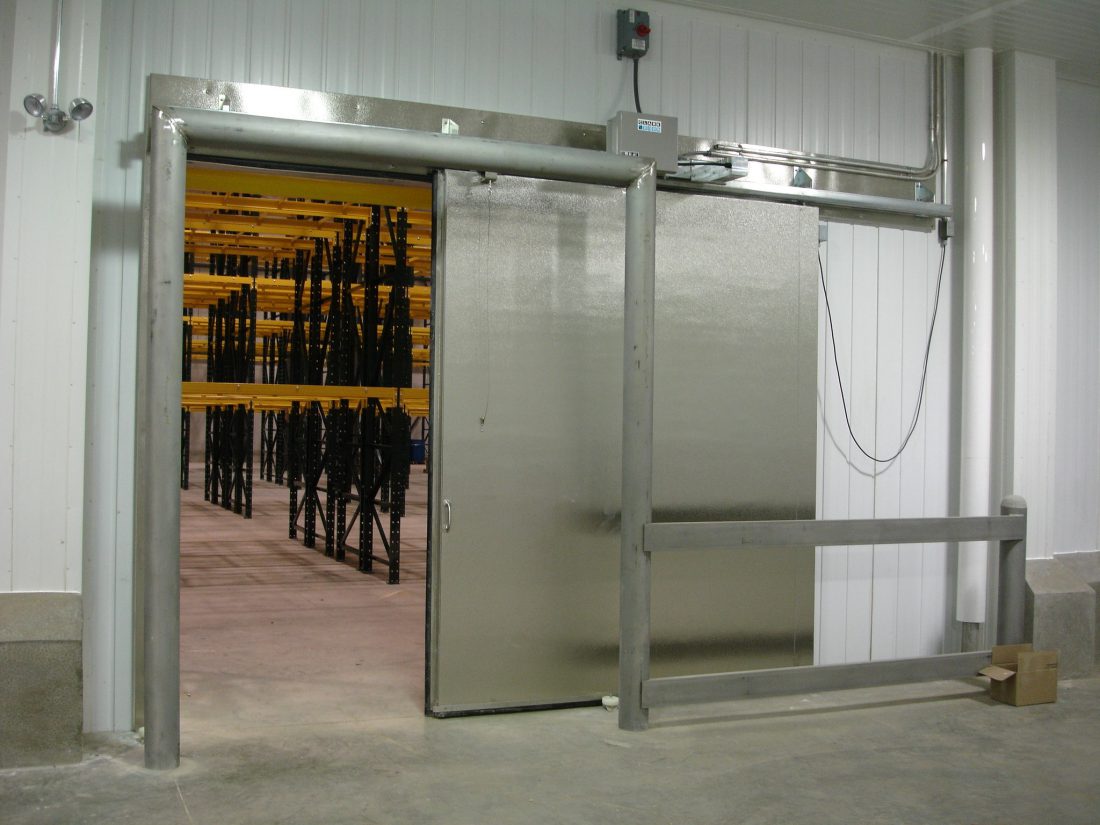Selecting the proper doors for your cold storage facility is an important part of the decision process for your building envelope. Your food plant design firm will want to look at all aspects of your plant’s operations to determine the most appropriate door types and materials. Installing the proper door will have a positive impact on the facility’s energy costs and productivity, while selecting the wrong type of door can result in down time, costly damage, and unsafe conditions.
There are a number of factors to consider when selecting doors for your facility:
Door Opening Characteristics:
- Operating temperature/humidity — Consider the normal and extreme operating parameters of your plant to ensure doors are equipped to withstand the conditions.
- Opening frequency — Anticipate the number of times per day and per hour an opening will be used. This could influence the desired speed of the door operation and its suitability for high-cycle applications.
- Type of use — Will forklifts, motorized pallet jacks, push carts, or personnel pass through the door? This affects the opening size and may impact the opening and closing speed. Clearance for safe equipment passage must also be considered. The size of the opening, especially height, can have an impact on air movement and energy efficiency.
- Clearances — Room layout and structure may prohibit some door types that need side or head clearance. Doors with housing frames and those that swing or slide open need additional clearance space.
- Pressure differential — Significant pressure differences can eliminate some door types or affect the way they are constructed. Higher pressure differential can cause rapid air changes and result in possible condensation and/or ice formation.
- Door construction — Your plant’s wash-down procedures and cleaning solutions will also impact door selection. Sturdy, damage-resistant doors are the best choice for plants that require more physical, high-pressure wash downs. Corrosion-resistant doors can provide protection for harsh, caustic cleaning materials.
- Budget — Consider the upfront cost of the door as well as the operating costs, including energy use, repair and maintenance.
Operational Considerations:
- Safety — Most doors will include built-in and optional safety features. You may also consider internal controls to prohibit foot traffic through high-powered, motorized doors where heavy equipment passes.
- Operational habits — Do equipment operators respect and protect doors or are they frequently hitting them and causing damage? If so, your plant should consider impact-resistant or impactable doors.
- Activation method — Determine how a power door will be activated, as this will determine the speed at which equipment can pass through and the potential for damage. For example, pull-cord activation may slow down the equipment temporarily, but will increase safety and operational habits.
- Time delay close — Automatic close options help close powered doors, yet the door can potentially close on moving equipment and pedestrians. Standard reversing systems may not be enough. Your plant may consider adding optional safety sensors to doors that include a time-delay close to enhance protection of equipment and pedestrians and reduce damage to the door.
If you’d like to learn more about selecting the proper doors for your facility, email me at foodforthought@stellar.net.




What high speed freezer doors has Stellar been promoting?
Conditions: 35 degree dock going ito -17 degree freezer
Door openings per day are approximately 300-500
Thanks James for reaching out. We will be contacting you shortly with an answer to your question.